2024 ︎ In the Wake of the Tipping Point
︎Installation︎Sculptures︎ 4K-Video ︎ Snow depot mats
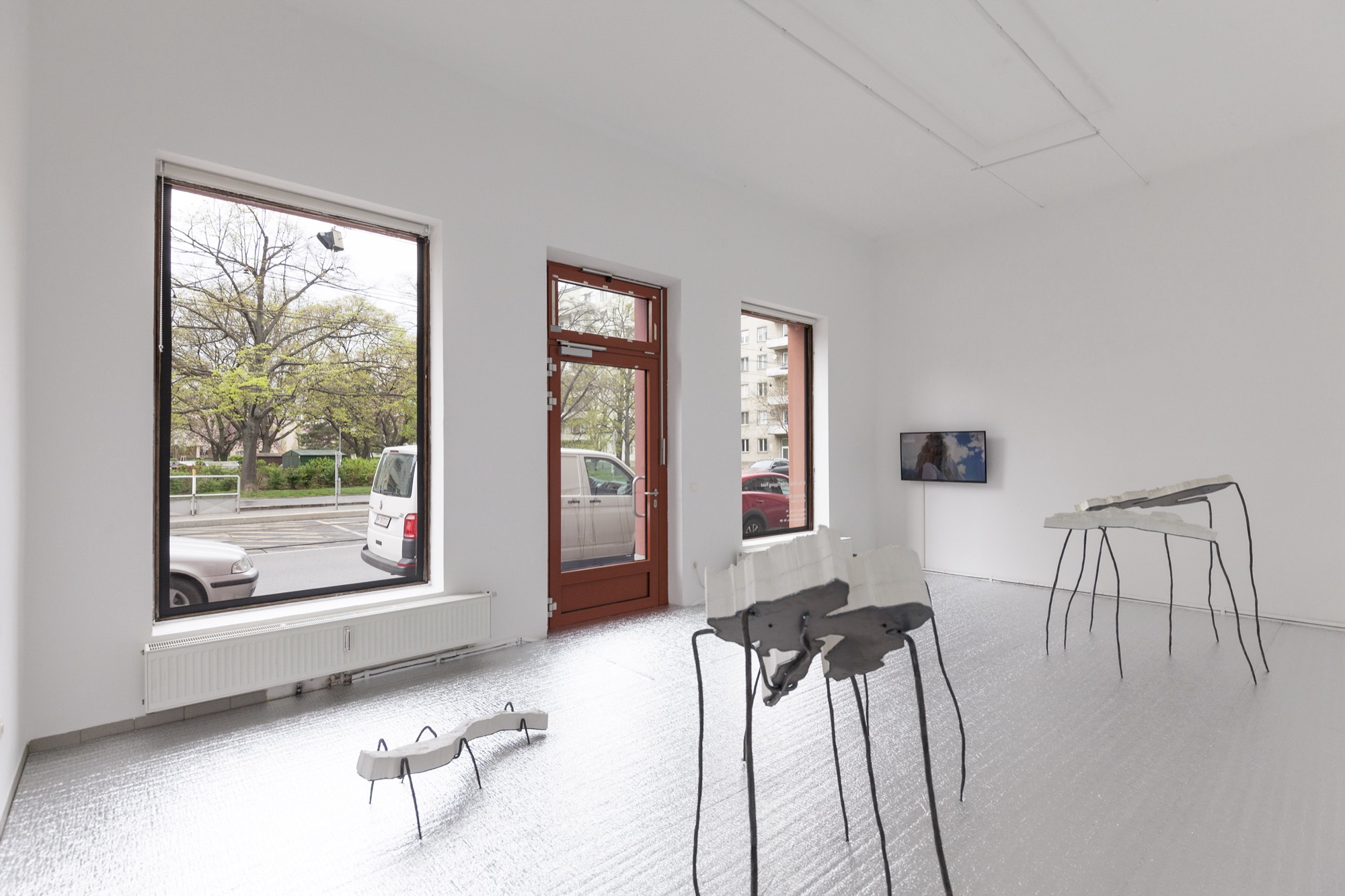
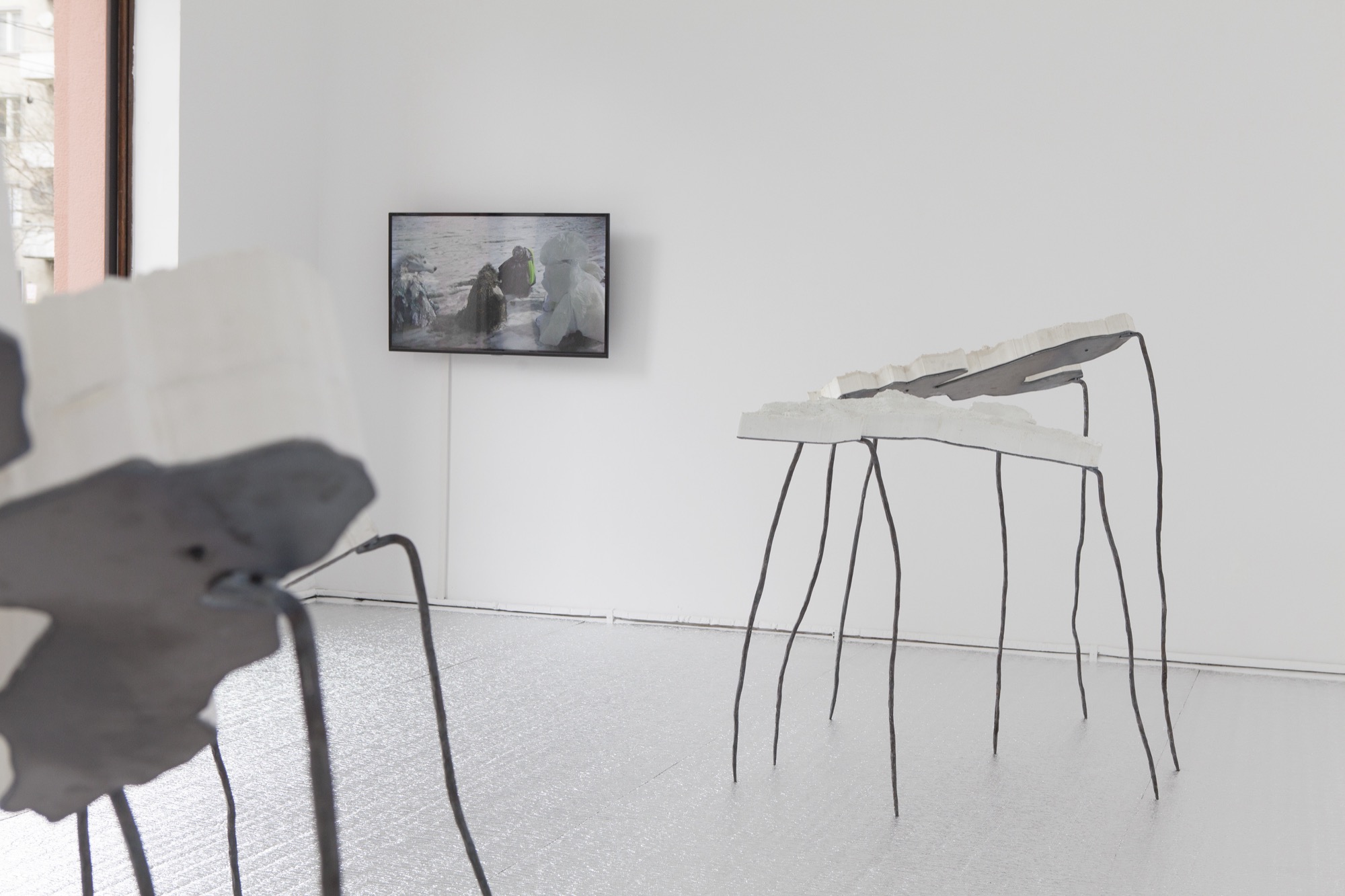

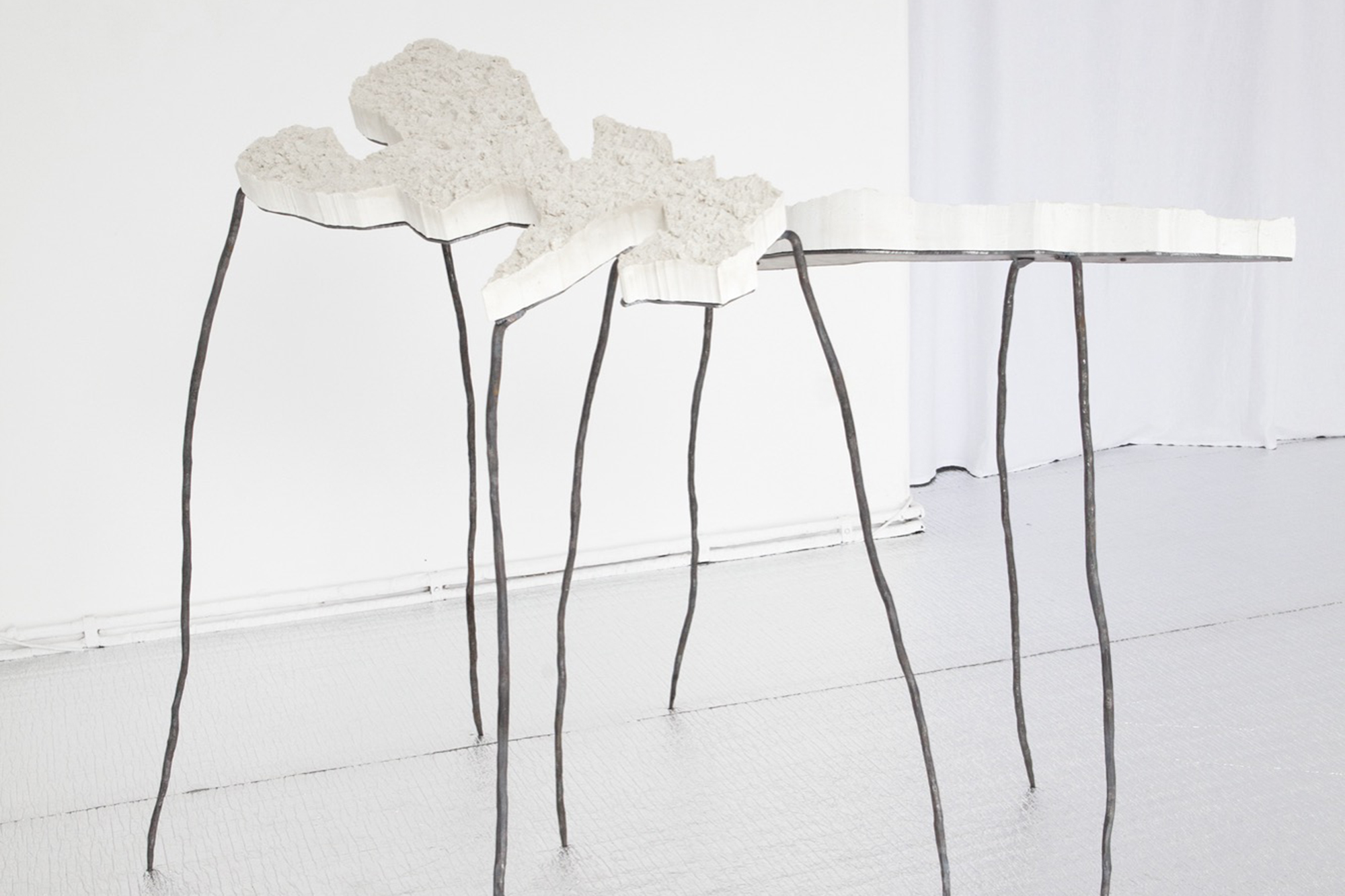
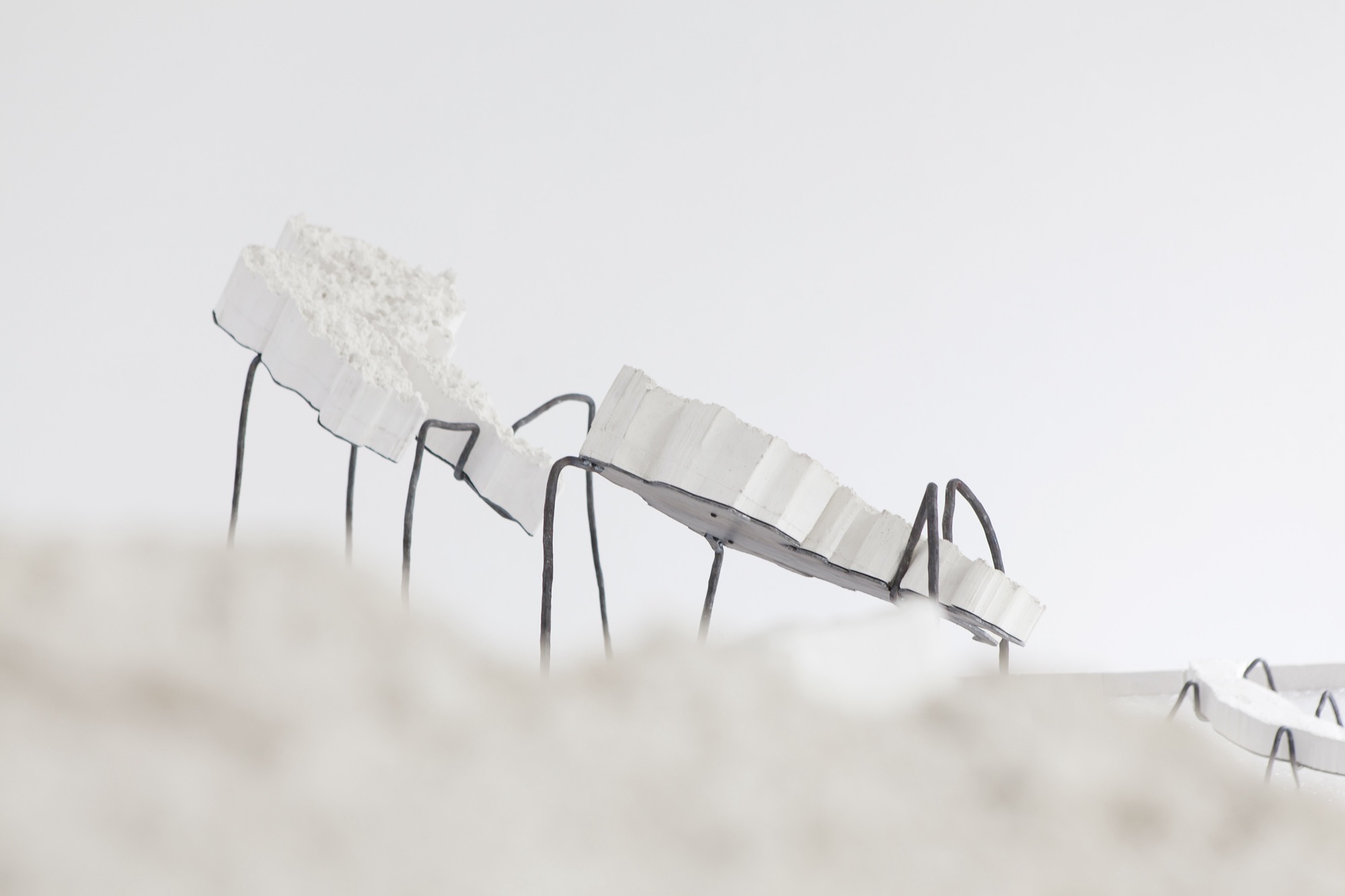
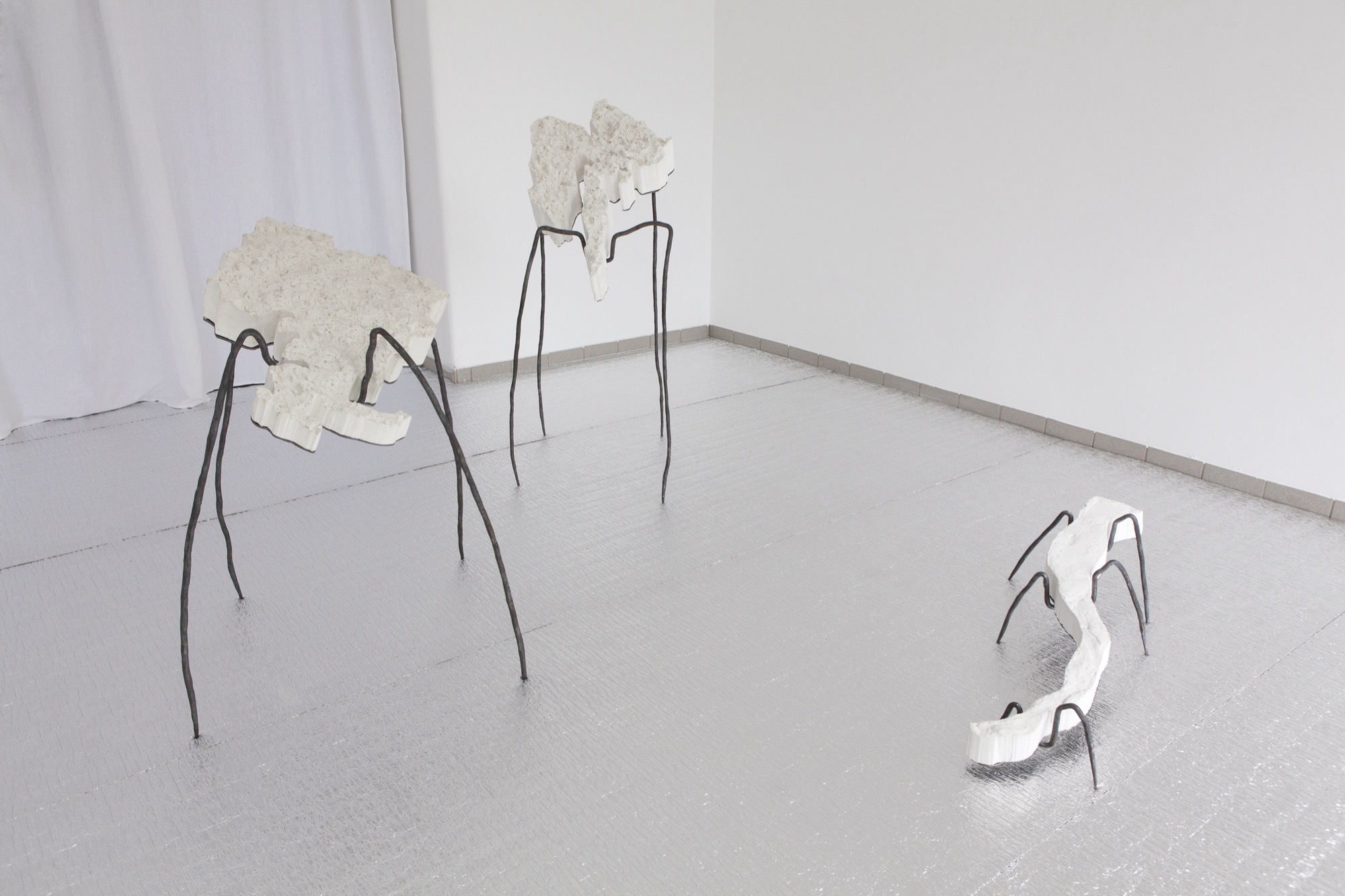
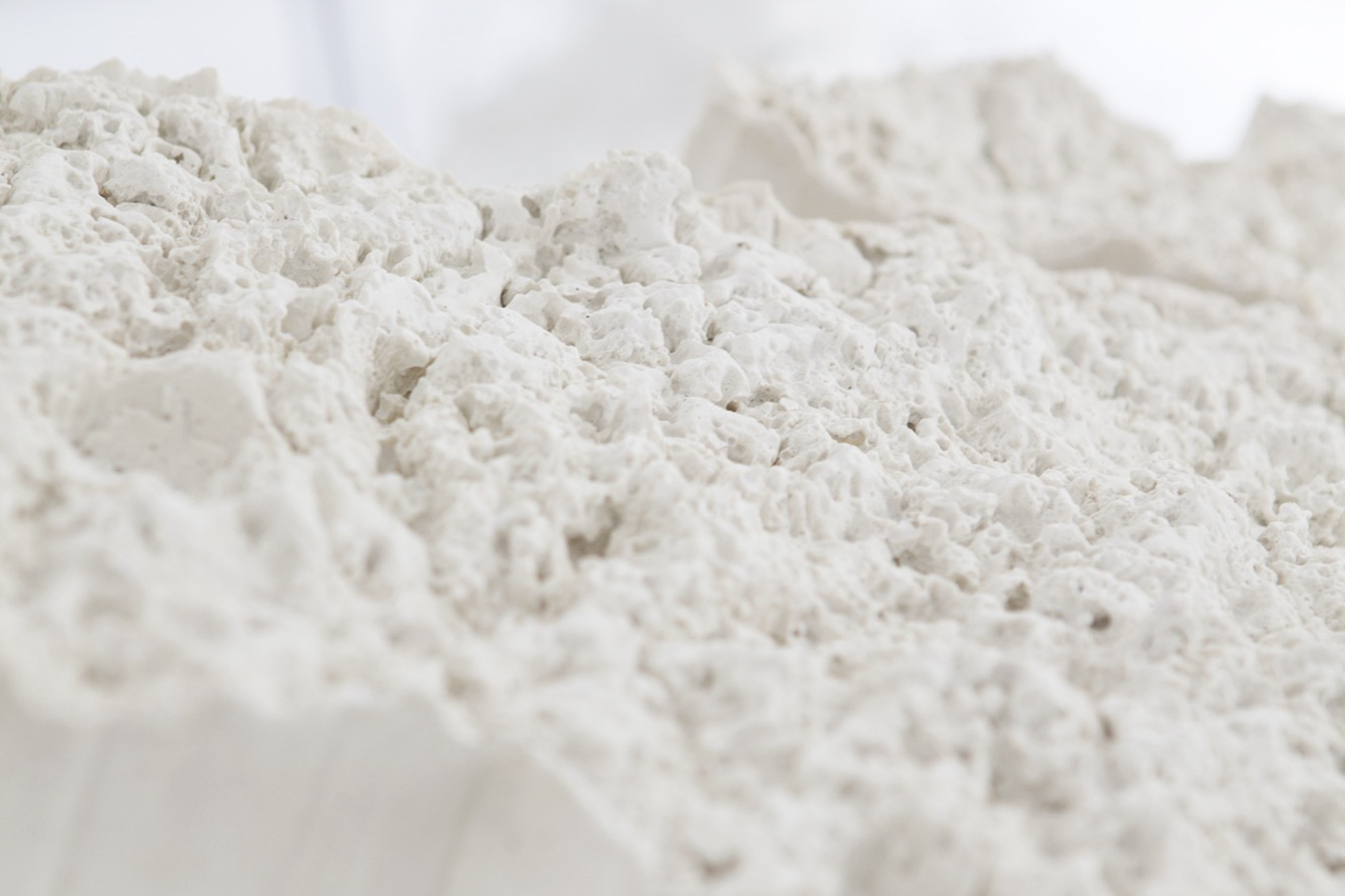
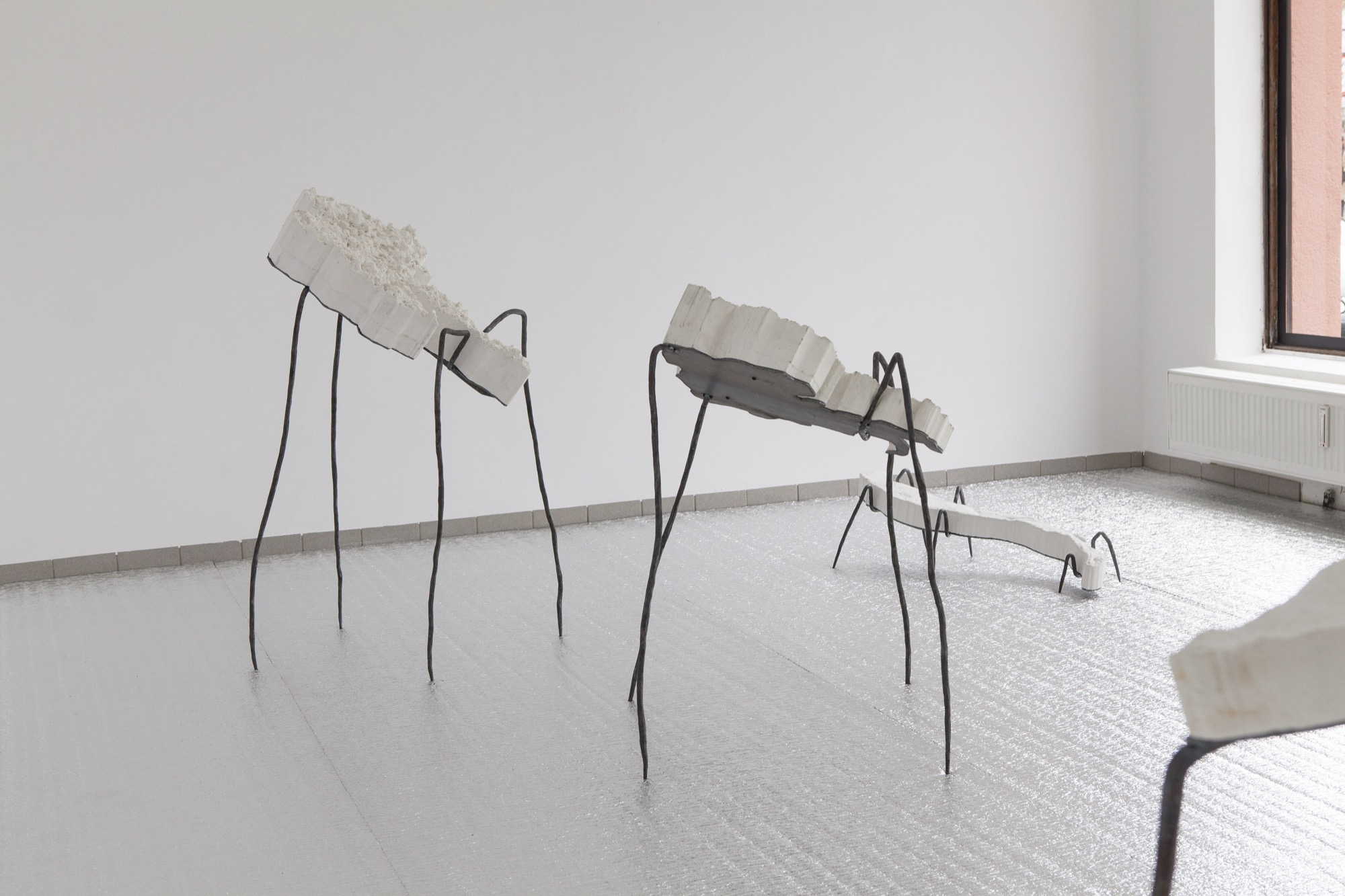
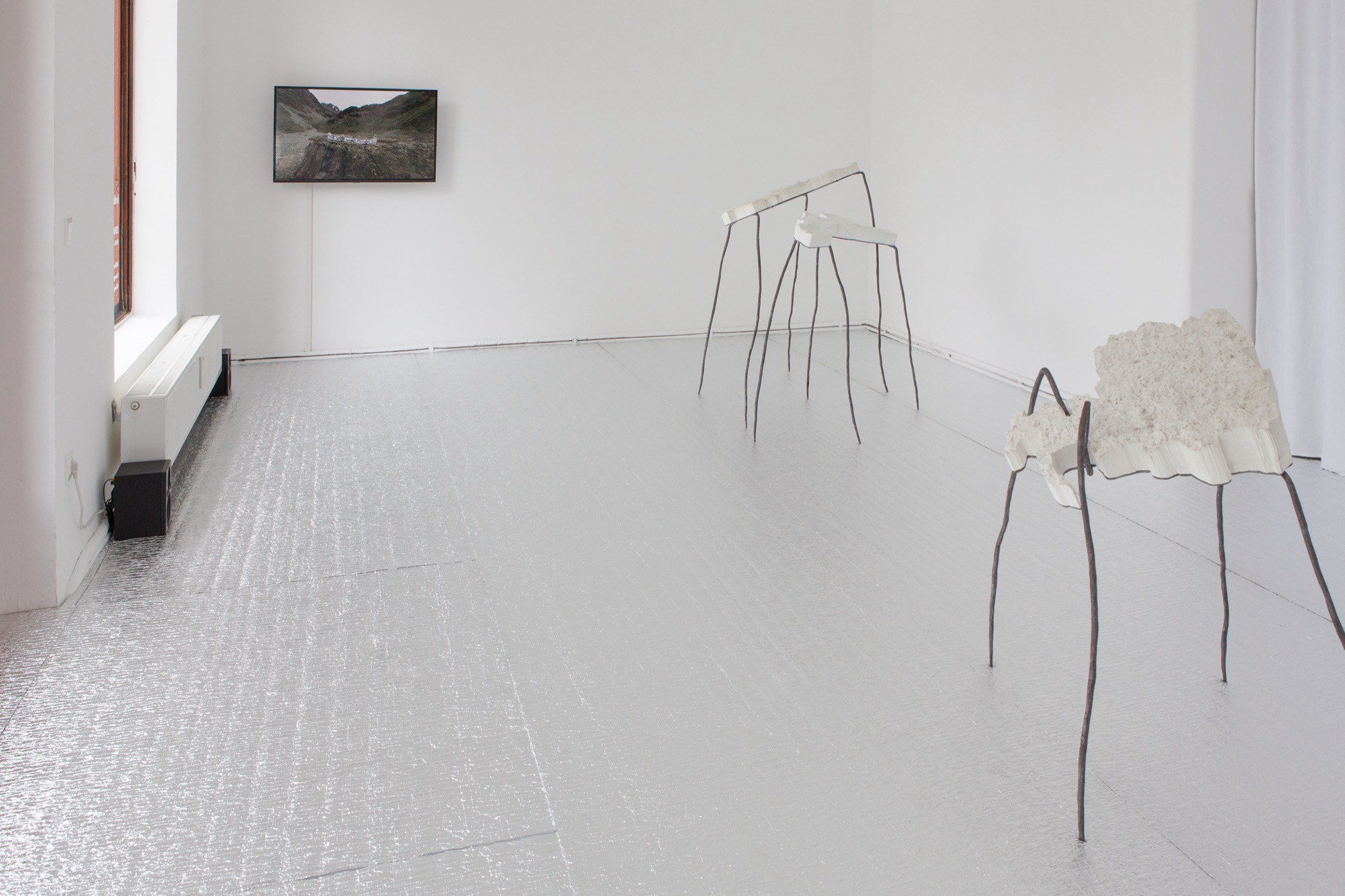
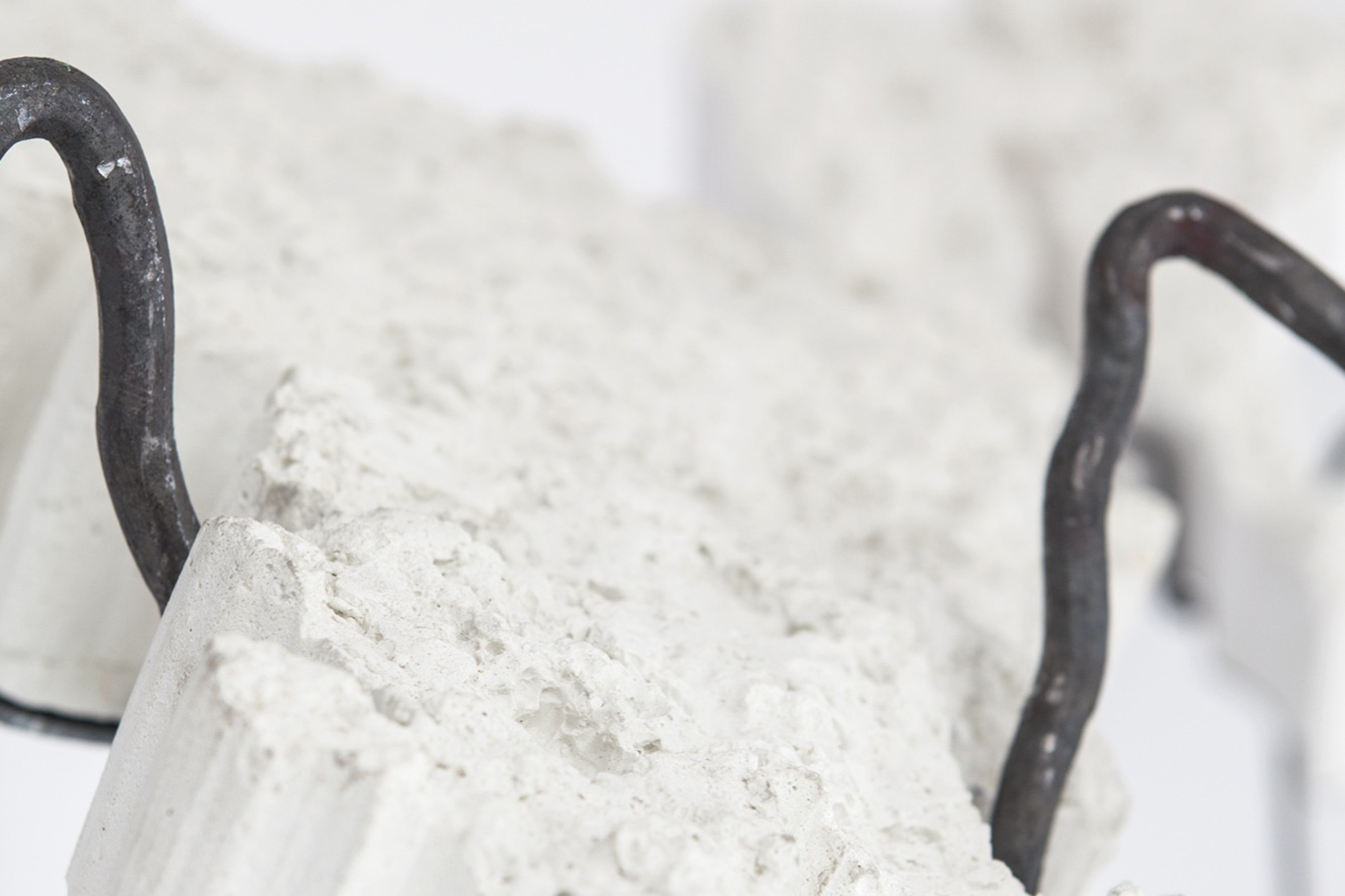
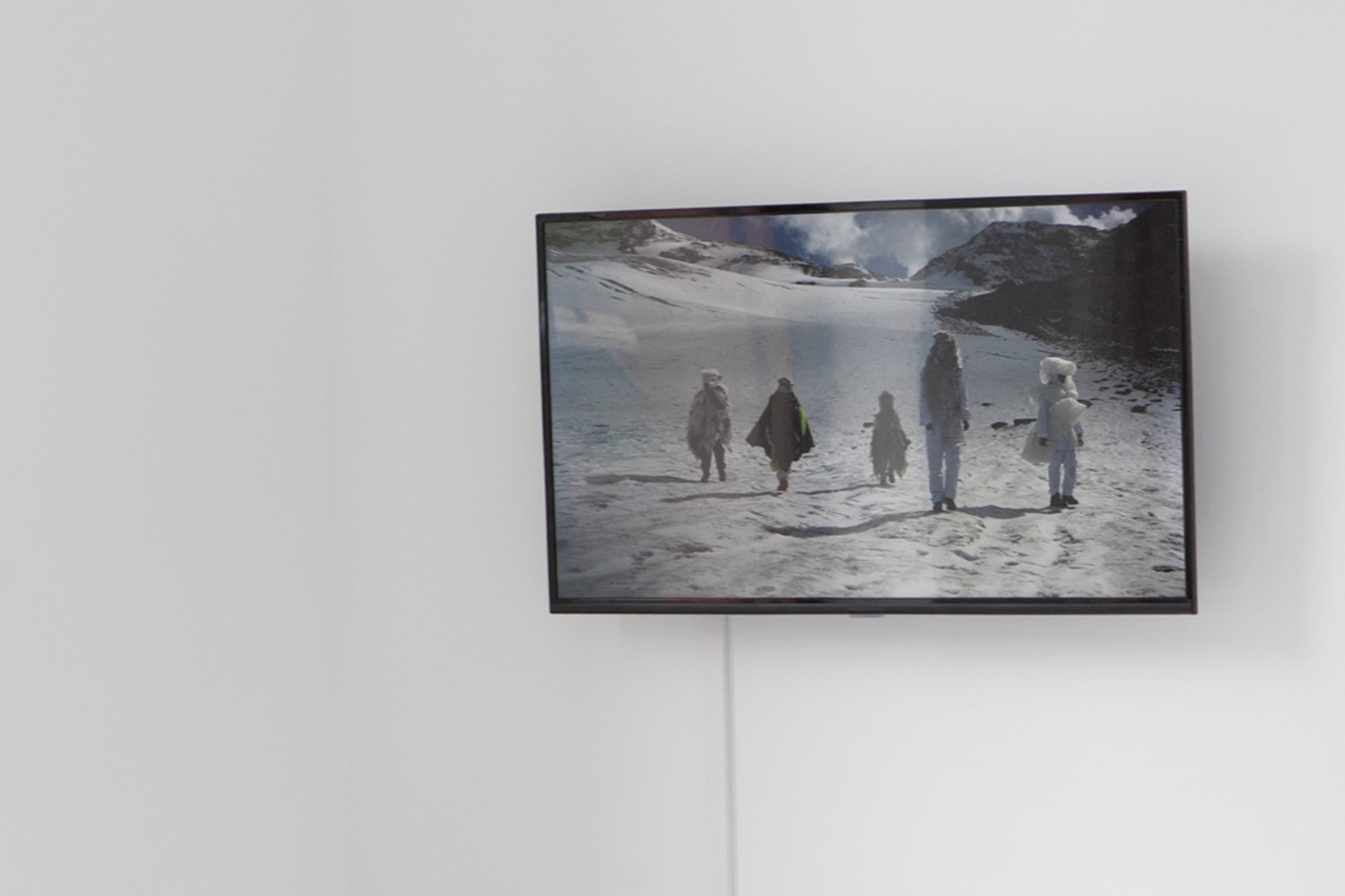

In the Wake of the Tipping Point
Installation, 2024
Sculptures, 4K-Video, Snow depot mats
With
the introduction of the term Anthropocene1 at the beginning of the 21st century, our understanding of nature has
undergone a drastic change in perspective. It stands for the
scientific
evidence that »the geological impact of colonial and industrial
activities on Earth’s natural systems«2 is so extensive that it can
be defined
as a geological epoch. Controversial as a concept because it does not
take into account the social, economic or political impact of human
influence
on the planet, the Anthropocene has nevertheless become an important
buzzword for the profound interdependence of humans and nature. It
has proven to be a productive influence
for artists interested in politics and ecology, and as a mediator
between art, science and technology, it motivates artistic research
methods and interdisciplinary strategies.
Climate research defines a tipping point as a critical moment at which a development becomes irreversible or is accelerated to such an extent that it causes a system to collapse. In the Alpine region, the melting of glaciers represents such a tipping point in terms of water supply. Johanna Tinzl's group of works entitled The Archive of Disappearance is dedicated to this reality. Since 2019, the artist has been archiving the topographies and surfaces of rapidly shrinking glaciers using the casting technique and translating them into sculptures. The series comprises five casts: the Sólheimajökull in Iceland (2019), the Gepatschferner (Kauntertal, 2020), the Schalfferner (Ötztal, 2021), the Pasterze (Glocknergruppe, 2022) and the Vermunt Glacier (Silvretta, 2023) in Austria. For her research, the artist drew on data from glaciologists and aerial photographs from public geodata services to determine the outlines based on measurements from the previous year. These are translated into a true-to-scale mold and cast on site on the glacier using alabaster plaster. The surface of the mold corresponds to the actual surface of the ice.
Johanna Tinzl chooses her materials carefully and uses them as actors of resistance to make the global and local dimensions of ecological and technological processes visible. For example, the alabaster plaster is a natural product and therefore enables sustainable working on site without leaving harmful remnants on the glacier. The sculptures themselves are made of concrete, a material notorious for contributing to 9% of global CO2 emissions. The aluminum-coated foam mats laid on the exhibition floor not only symbolize the vast amount of plastic generated by consumers but also allude to the prevalence of microplastics already discovered in glaciers.
The working process is physically demanding, almost performative: the artist and her companions transport the molds and materials for the casts, which weigh up to 20 kilos, strapped to their backs up to the glacier, covering distances of up to 700 meters in altitude. The body knowledge shaped through the experience of distance, altitude, cold, wind and sunlight flows into the works. The sculptures are the result of an artistic transformation process grounded on touch and translation, giving the glaciers a different, less precarious physicality. The forged legs resemble those of insects and convey liveliness. In this way, the sculptures form an imagined community that reminds us of the fragile beings and complex ecosystems that glaciers are, and how closely we are connected to them. At the same time, the glacier’s imprint fixed in a momentary sculptural form refers to the impossible task of archiving a process of disappearance characterized by constant change.
Climate research defines a tipping point as a critical moment at which a development becomes irreversible or is accelerated to such an extent that it causes a system to collapse. In the Alpine region, the melting of glaciers represents such a tipping point in terms of water supply. Johanna Tinzl's group of works entitled The Archive of Disappearance is dedicated to this reality. Since 2019, the artist has been archiving the topographies and surfaces of rapidly shrinking glaciers using the casting technique and translating them into sculptures. The series comprises five casts: the Sólheimajökull in Iceland (2019), the Gepatschferner (Kauntertal, 2020), the Schalfferner (Ötztal, 2021), the Pasterze (Glocknergruppe, 2022) and the Vermunt Glacier (Silvretta, 2023) in Austria. For her research, the artist drew on data from glaciologists and aerial photographs from public geodata services to determine the outlines based on measurements from the previous year. These are translated into a true-to-scale mold and cast on site on the glacier using alabaster plaster. The surface of the mold corresponds to the actual surface of the ice.
Johanna Tinzl chooses her materials carefully and uses them as actors of resistance to make the global and local dimensions of ecological and technological processes visible. For example, the alabaster plaster is a natural product and therefore enables sustainable working on site without leaving harmful remnants on the glacier. The sculptures themselves are made of concrete, a material notorious for contributing to 9% of global CO2 emissions. The aluminum-coated foam mats laid on the exhibition floor not only symbolize the vast amount of plastic generated by consumers but also allude to the prevalence of microplastics already discovered in glaciers.
The working process is physically demanding, almost performative: the artist and her companions transport the molds and materials for the casts, which weigh up to 20 kilos, strapped to their backs up to the glacier, covering distances of up to 700 meters in altitude. The body knowledge shaped through the experience of distance, altitude, cold, wind and sunlight flows into the works. The sculptures are the result of an artistic transformation process grounded on touch and translation, giving the glaciers a different, less precarious physicality. The forged legs resemble those of insects and convey liveliness. In this way, the sculptures form an imagined community that reminds us of the fragile beings and complex ecosystems that glaciers are, and how closely we are connected to them. At the same time, the glacier’s imprint fixed in a momentary sculptural form refers to the impossible task of archiving a process of disappearance characterized by constant change.
The
short film Activate the Good
Spirits, Haunt the Toxic Ghosts (2024)
approaches the nature of glaciers and the landscape they shape as a
speculative science fiction
narrative. It is populated by a collective of mythological figures
from alpine legends and post-humanistic beings. We encounter figures
transformed into the future, such as the queerly read, mythical
»Salige«, the »Glacier
Bear«
and the »Tree
Man«,
who hark back to the Tyrolean carnival and pagan customs. Together
with the
»Cloud«
and the »Radioactive
Fish«,
both contaminated by anthropocentric influences,
they form a community of nomadic subjects. The visibly shrunken
glacier, whose traces have formed the landscape, comes into the
picture by means of drone shots that show a sublime, supposedly
untouched, archaic nature.
The collective seems well adapted to the climatic conditions in this landscape, but the reason for its presence is left to our imagination. Actions of the collective can equally be read as scientific methods, healing practices, gestures of care, animistic rituals, means of communication or activism. Only once does the group become explicit in its demand, when it uses a self-made banner to address (glacial) water as a contested resource. Obviously, the message is addressed less to a counterpart in the film than to us viewers directly.
Together with her protagonists, the artist traces a supposedly different, mythological and ancient knowledge about the glaciers and speculates on how this knowledge can be activated for future forms of coexistence and understanding between human and non-human actors. The material of the shimmering silver floor is used conventionally in the so-called snow farming. The goal is to shield the existing snow from the sun exposure in the warm months, preserving it for boosting an early start to the ski season. Despite, or perhaps because of, its paradoxical materiality, the floor creates a common ground for the art objects and the viewing subjects in the exhibition space. In direct sunlight, its surface produces reflections similar to ice and snow on a glacier – a poetic effect that animates the entire space.
Text: Georgia Holz
The collective seems well adapted to the climatic conditions in this landscape, but the reason for its presence is left to our imagination. Actions of the collective can equally be read as scientific methods, healing practices, gestures of care, animistic rituals, means of communication or activism. Only once does the group become explicit in its demand, when it uses a self-made banner to address (glacial) water as a contested resource. Obviously, the message is addressed less to a counterpart in the film than to us viewers directly.
Together with her protagonists, the artist traces a supposedly different, mythological and ancient knowledge about the glaciers and speculates on how this knowledge can be activated for future forms of coexistence and understanding between human and non-human actors. The material of the shimmering silver floor is used conventionally in the so-called snow farming. The goal is to shield the existing snow from the sun exposure in the warm months, preserving it for boosting an early start to the ski season. Despite, or perhaps because of, its paradoxical materiality, the floor creates a common ground for the art objects and the viewing subjects in the exhibition space. In direct sunlight, its surface produces reflections similar to ice and snow on a glacier – a poetic effect that animates the entire space.
1 Other terms suggested by scholars are for example Capitalocene or
Chthulucene.
all photos: © Janine Schranz
2 T. J. Demos, Against
the Anthropocene,
Berlin 2016, p. 85
all photos: © Janine Schranz
The exhibition took place at Mz* Baltazar’s Laboratory in the framework of KLIMA BIENNALE WIEN.
The snow depot mats got sponsored by Steinbacher - Dämmt besser. Denkt weiter.
Please contact me for the password.